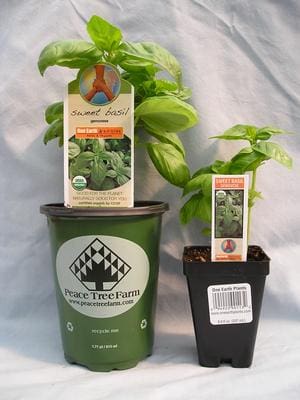by Chris Mosby and Cassie Neiden
Design the right tag for your customers with these tips.
The demand for well-designed tags and labels isn’t going away. Customers want to know what they’re buying and how to succeed with it. But providing that information isn’t always easy, and different regions require different information. We spoke with experts from around the industry on tag strategy and best practices.
Greenhouse Management: What should growers consider when designing their tags?
Bridget Behe, professor of horticultural marketing at Michigan State University: Most customers will benefit from some information on the tag on how to make them successful. The challenge is the space.
I would suggest sharing a captivating image of a mature plant (many consumers still can’t imagine what a plant looks like in a more mature stage) along with sun, water, and height/spacing estimates. I believe the most ciritical section is a way to get more information if a consumer needs it.
If the plant in question is an herb or vegetable, possible uses or recipes or harvest information may be helpful. For ornamental plants, additional information could include whether the plant has a pleasant fragrance or companion planting. Not everyone will want supplemental information but some will. Some consumers keep tags and they become a reference for future use. Connecting them with additional resources could lead to greater success, which may lead to subsequent purchases.
GM: What information do you put on your tags and labels?
Ann Buckwalter, sales & marketing coordinator, Peace Tree Farm (Pennsylvania): In addition to the plant photo, each tag has a program specific logo to identify plants as part of our Garden Geek or One Earth Edibles brands. The tags are deisgned to correspond with the brand’s identity. The text “Inspiration from” above the Peace Tree Farm logo is included on the bottom front of the Garden Geek tags to remind the customer where their favorite new plant came from originally. This way thte following season they can request these plants again.
On the back of the tag, a short, catchy plant descriptoin talks up the plant’s best attributes and adds a little about how the plant may be used. We illustrate the cultural information for the plant with both icons and text to keep it straight forward and easy for the garden center customer. Our USDA Organic One Earth Edibles have the USDA logo and certifying agent’s name to identify them as Certified Organic. This is becoming more important to the average garden center customer.
We are phasing out the QR code space on the back of the tag to favor our barcode SKU number. Our garden center buyers have been requesing SKU’s on our pots to make it easier at their point of sale. Studies from MasterTag and other companies are revealing that the QR codes are going out of fashion with consumers and are not helping sales.
GM: Does it depend on the plant?
AB: Yes. Each plant gets its own tag specific to the variety. The design of the tag depends on the program that the plant is in. The consumer demands a picture tag; our duty as a grower is to provide that as part of our product.
We try to keep the way the cultural information is presented consistent for all of our tags.
GM: How do you deisng your tags?
Karin Walters, marketing manager at Walters Gardens (Michigan): Having the plant name on the top of the label is extremely important. At one point, we had the photo at the top of the tag and customers requested that we change this feature.
Larger tags versus smaller stake tags. We have had opinions on two ends of the spectrum. We believe that having large (5in x 5in) tags for such items as Hardy Hibiscus is important since the small tag gets lost [in the plant], but it’s hard to try to convince growers if it doesn’t fit their model. This creates a situation where we typically have to order both kinds of tags to offer to our customers (applies to Proven Winners hibiscus only). Hibiscus are such big plants that having a smaller tag in a 3-gallon pot will often get lost. Plus, Hibiscus are typically in bloom in August or September for the retail center, so having a big tag with the flower will help sell it.

